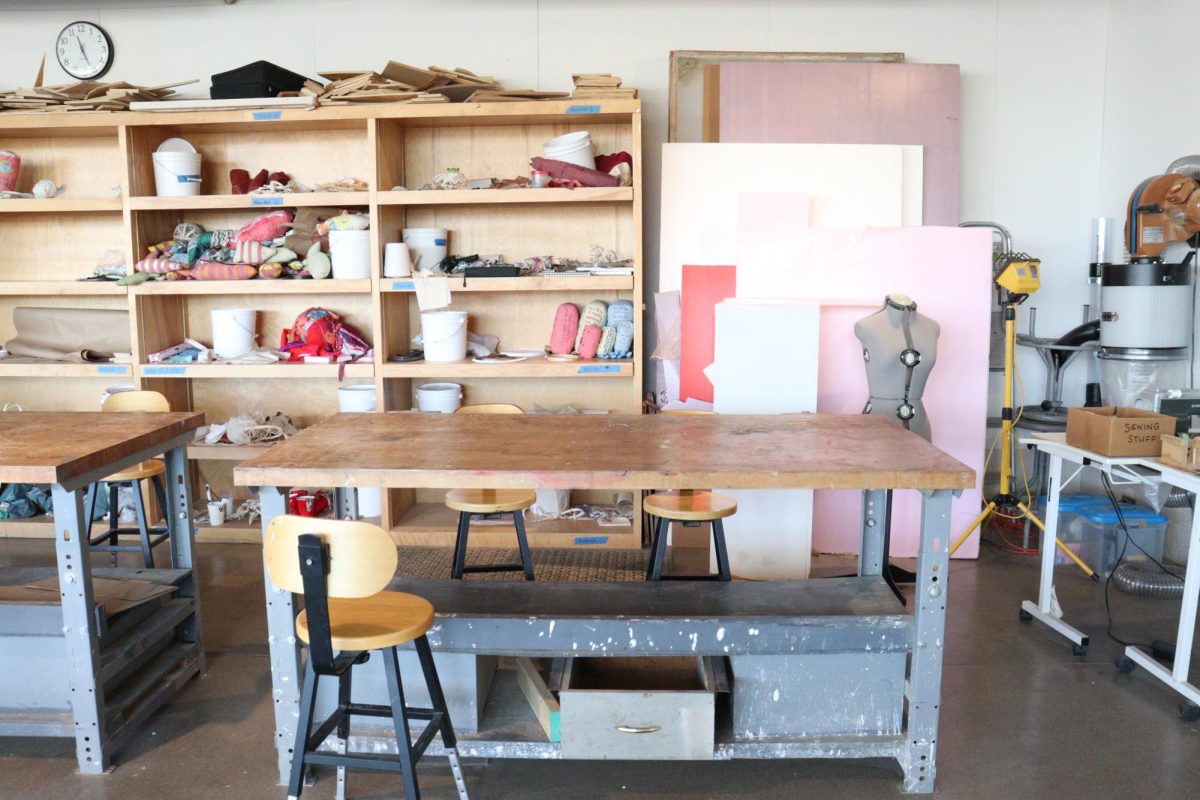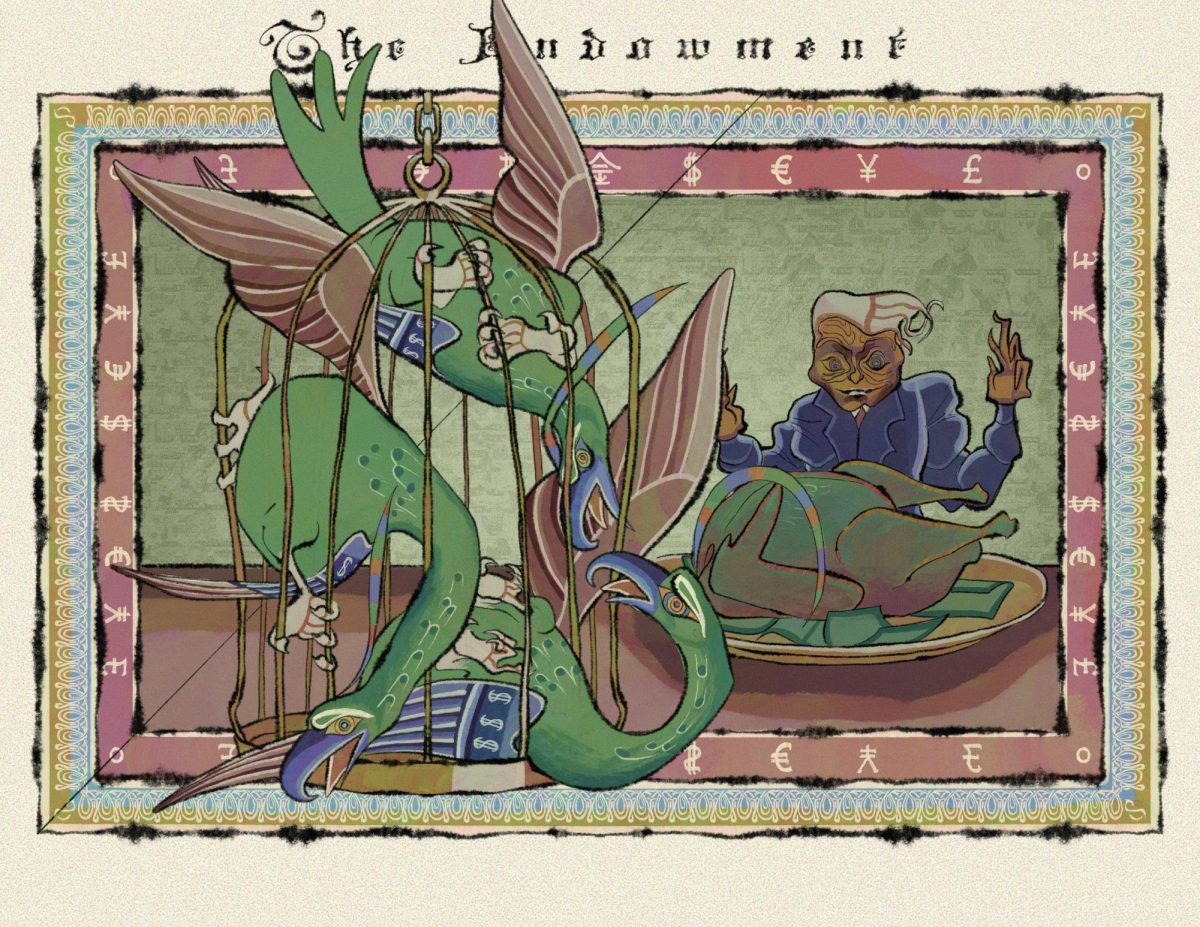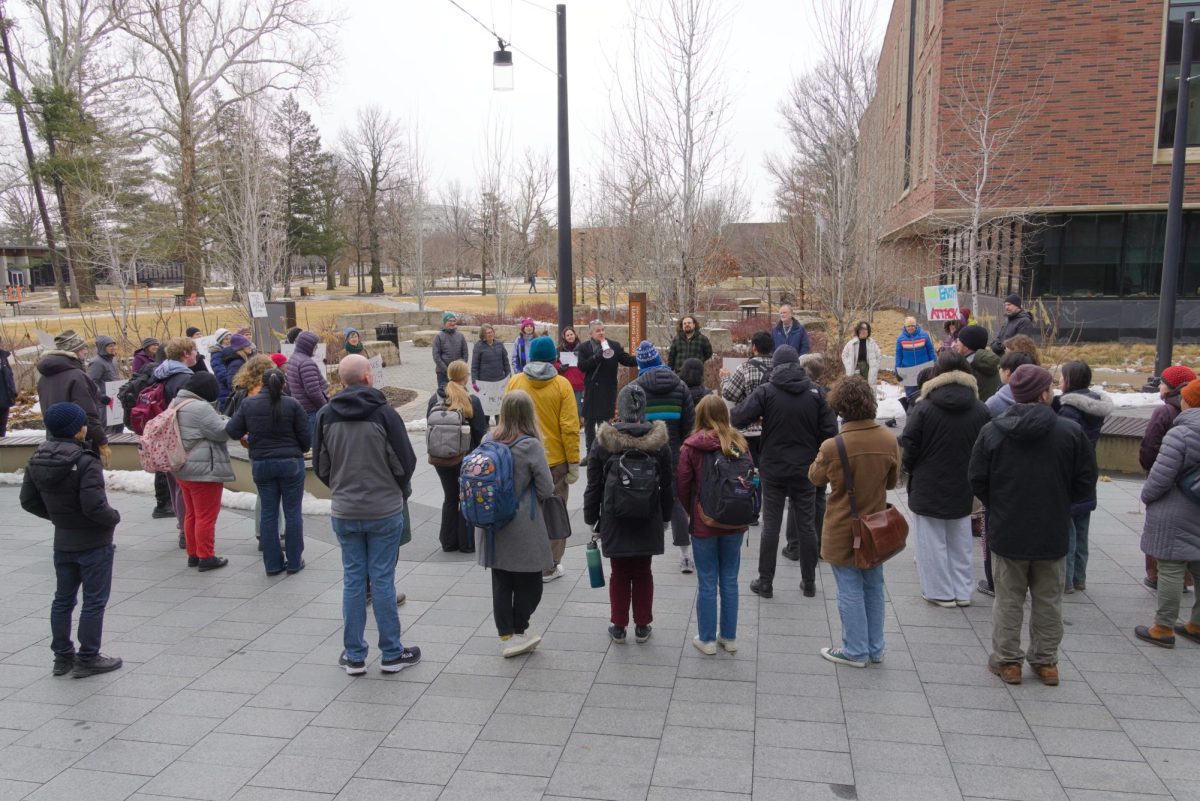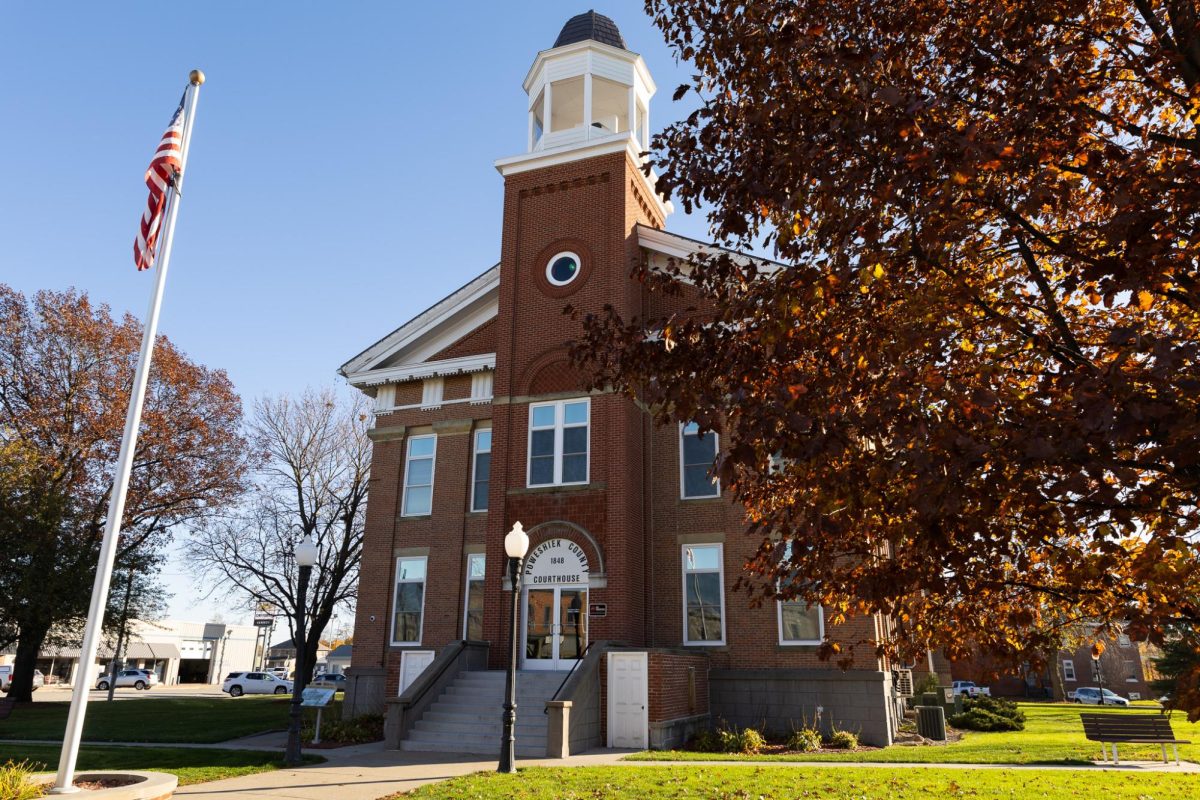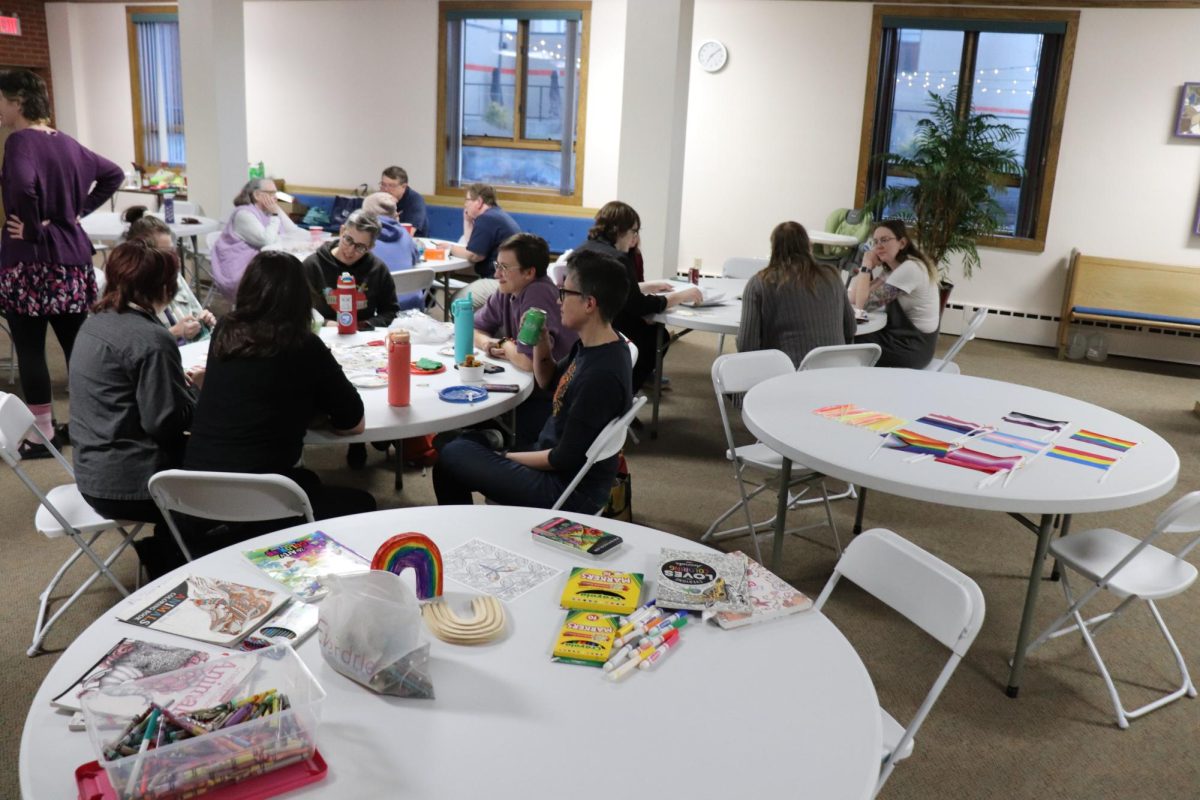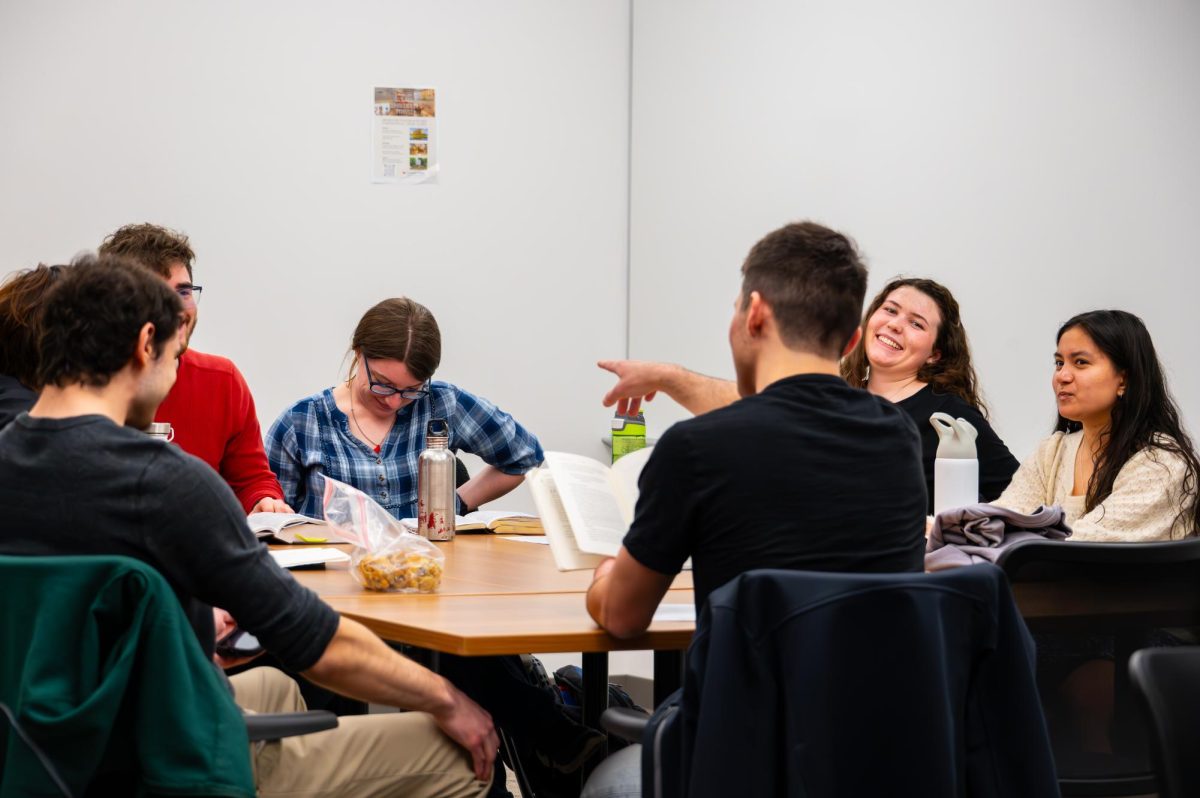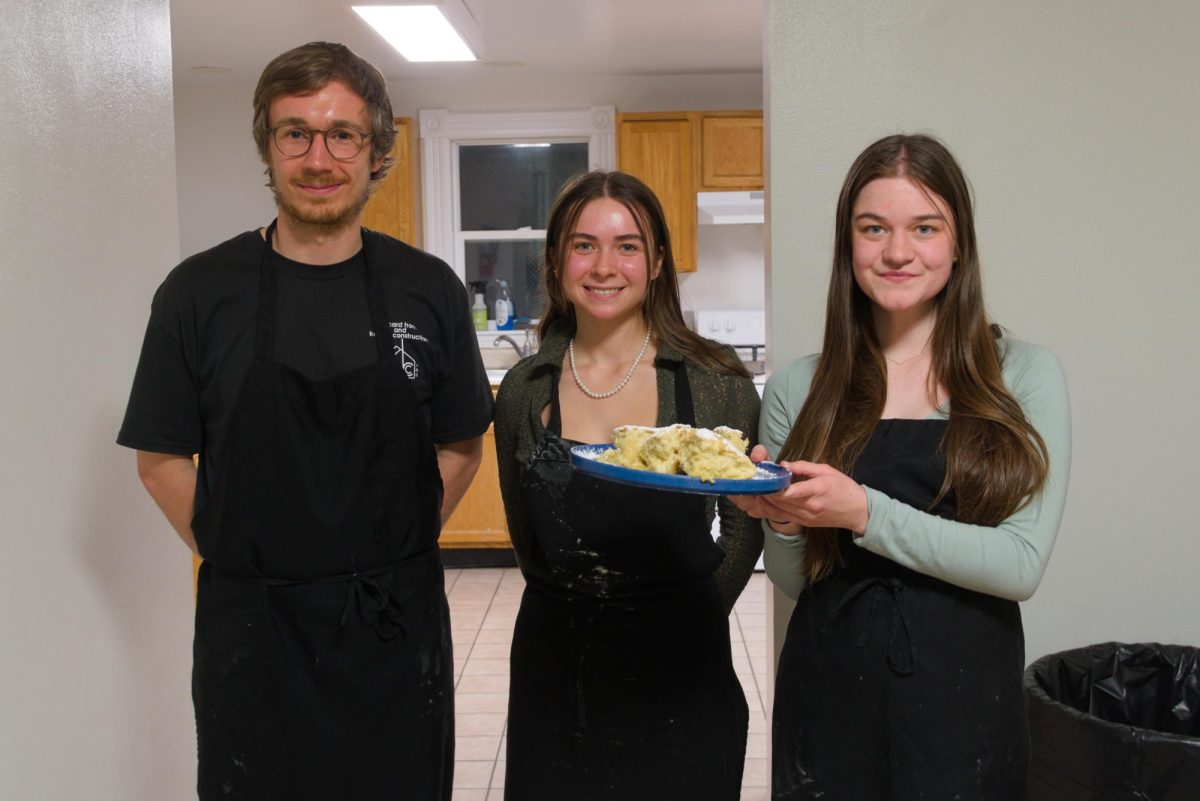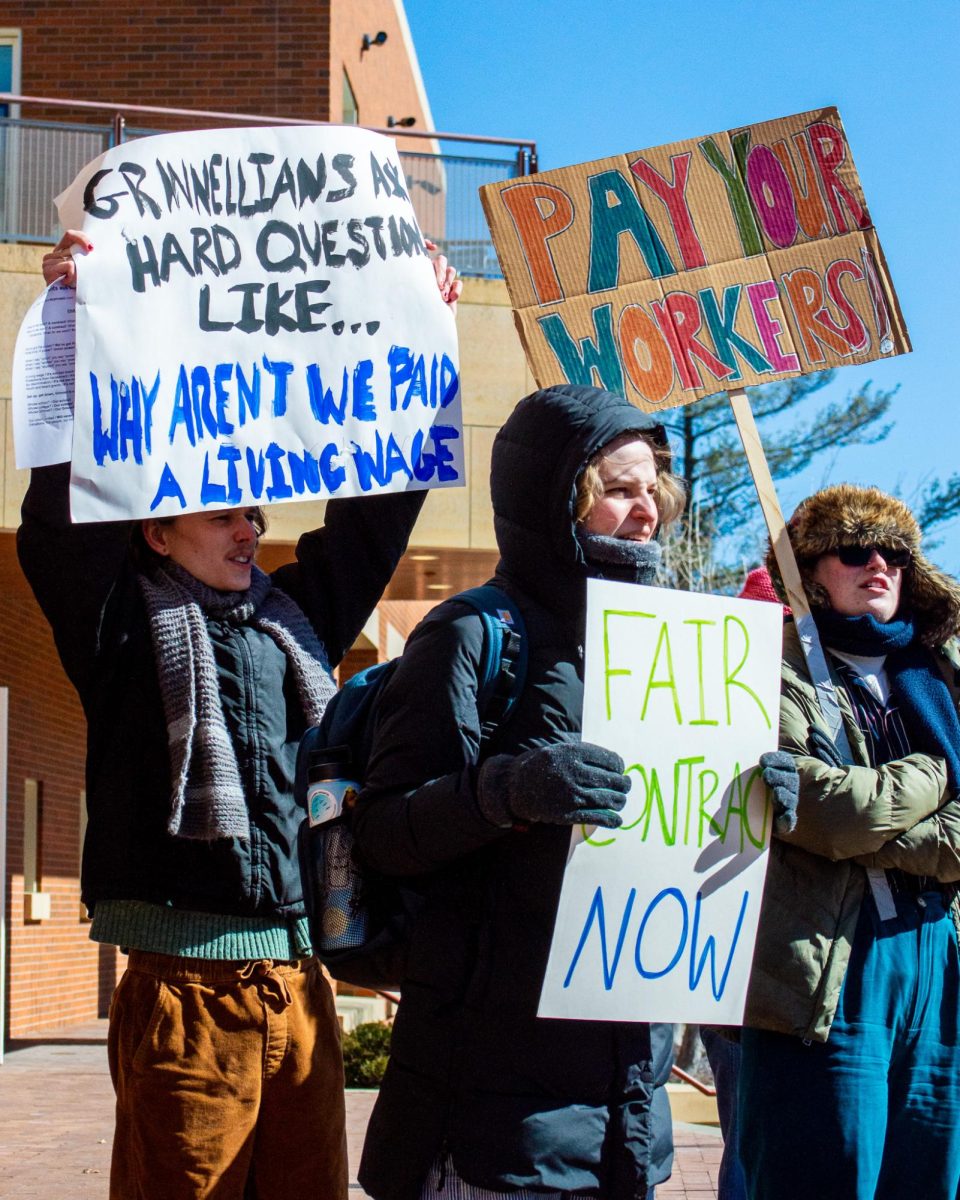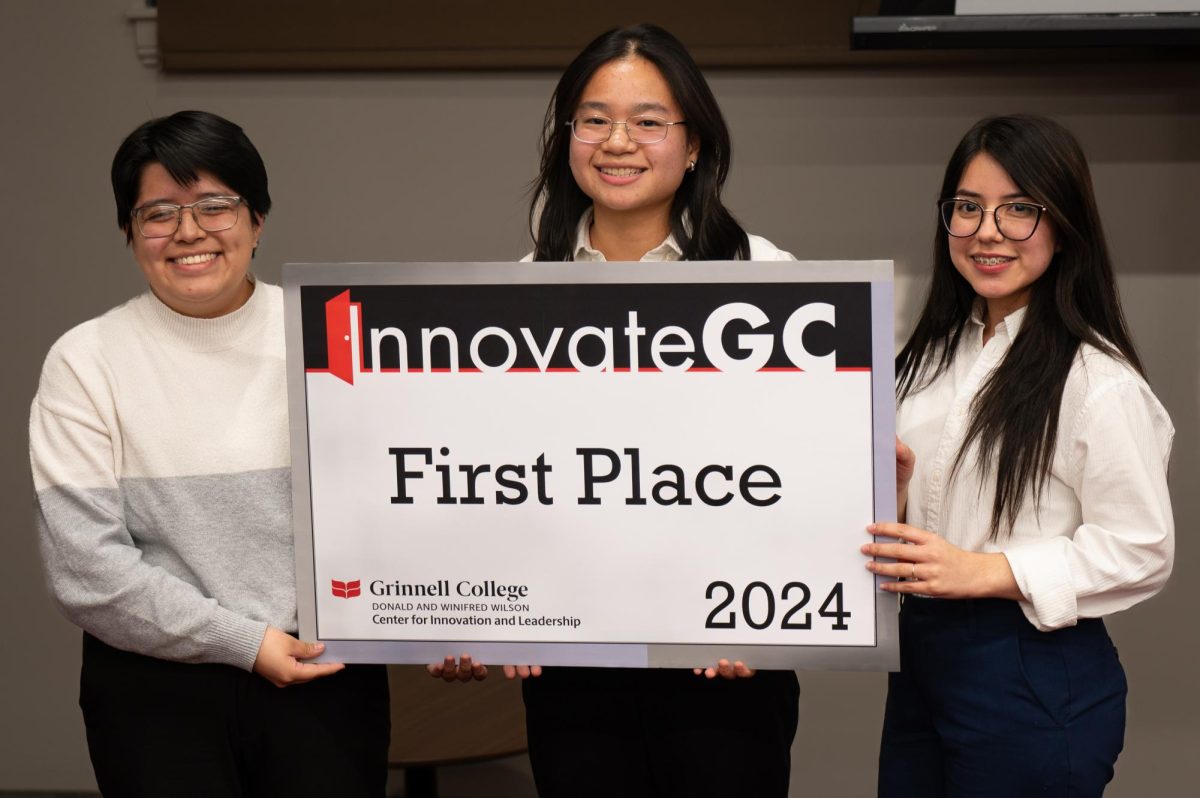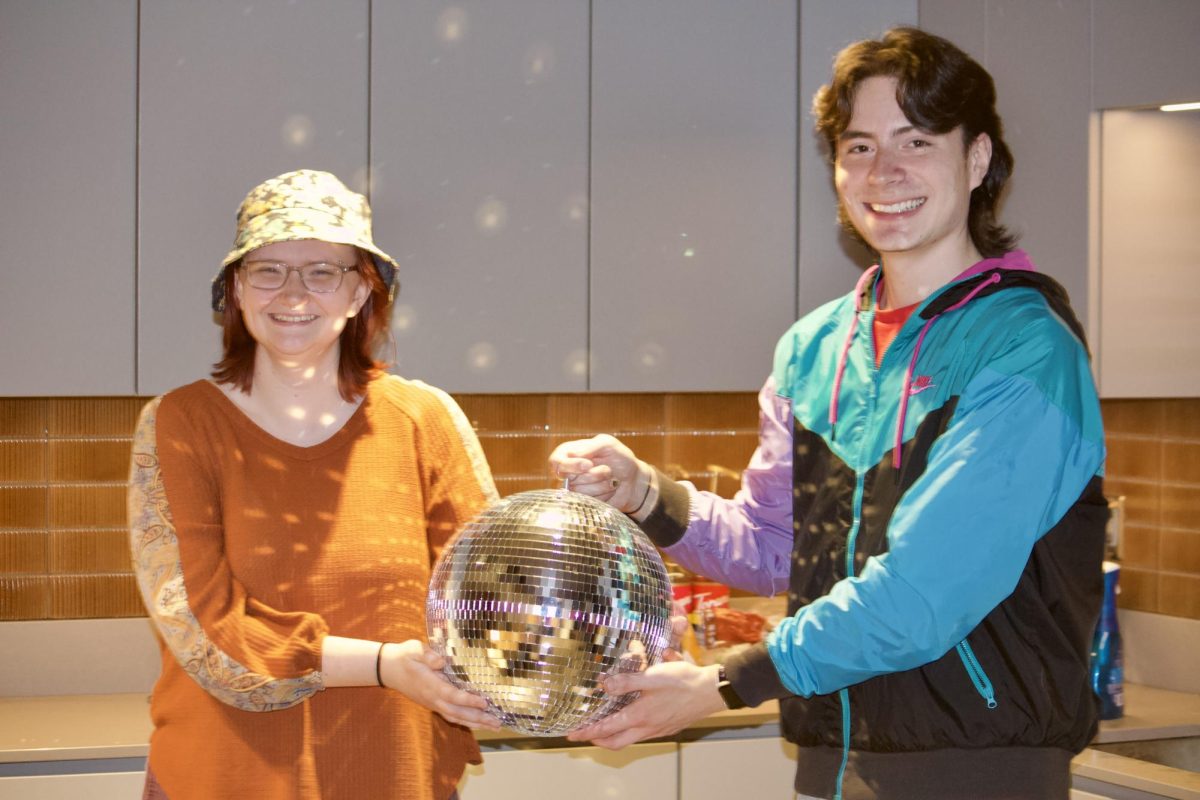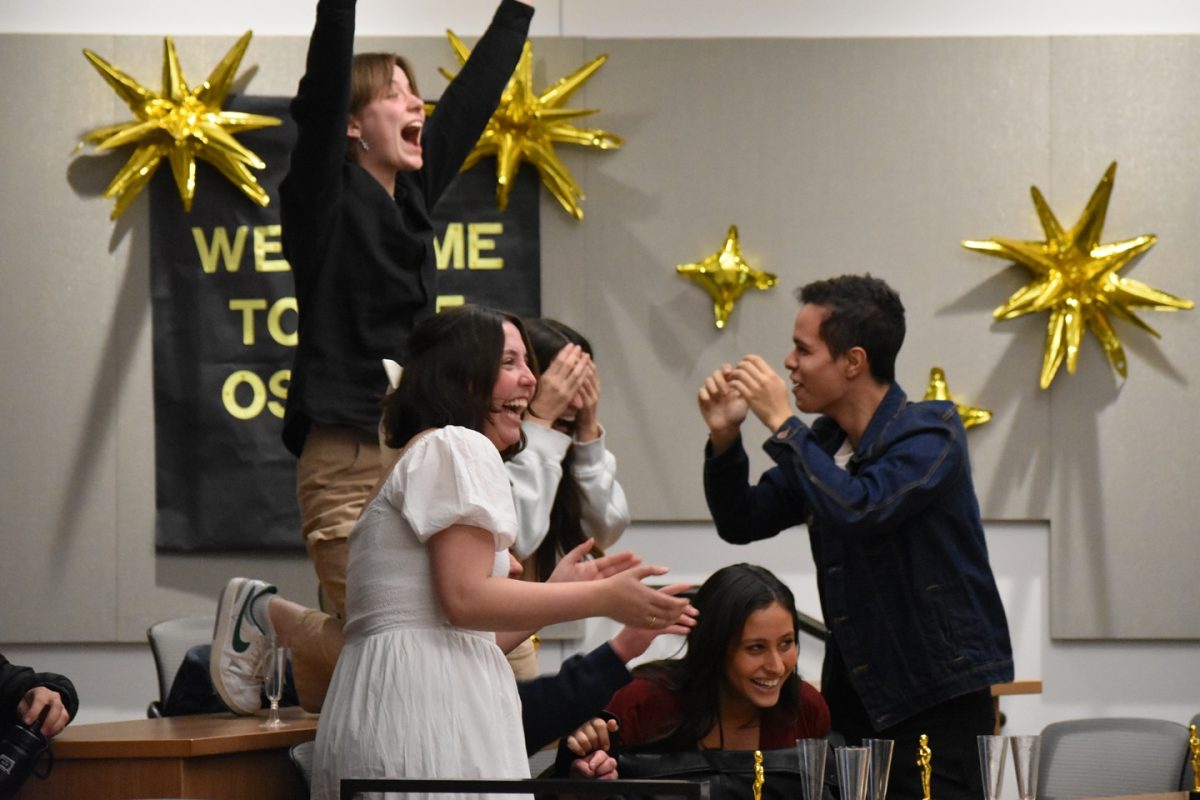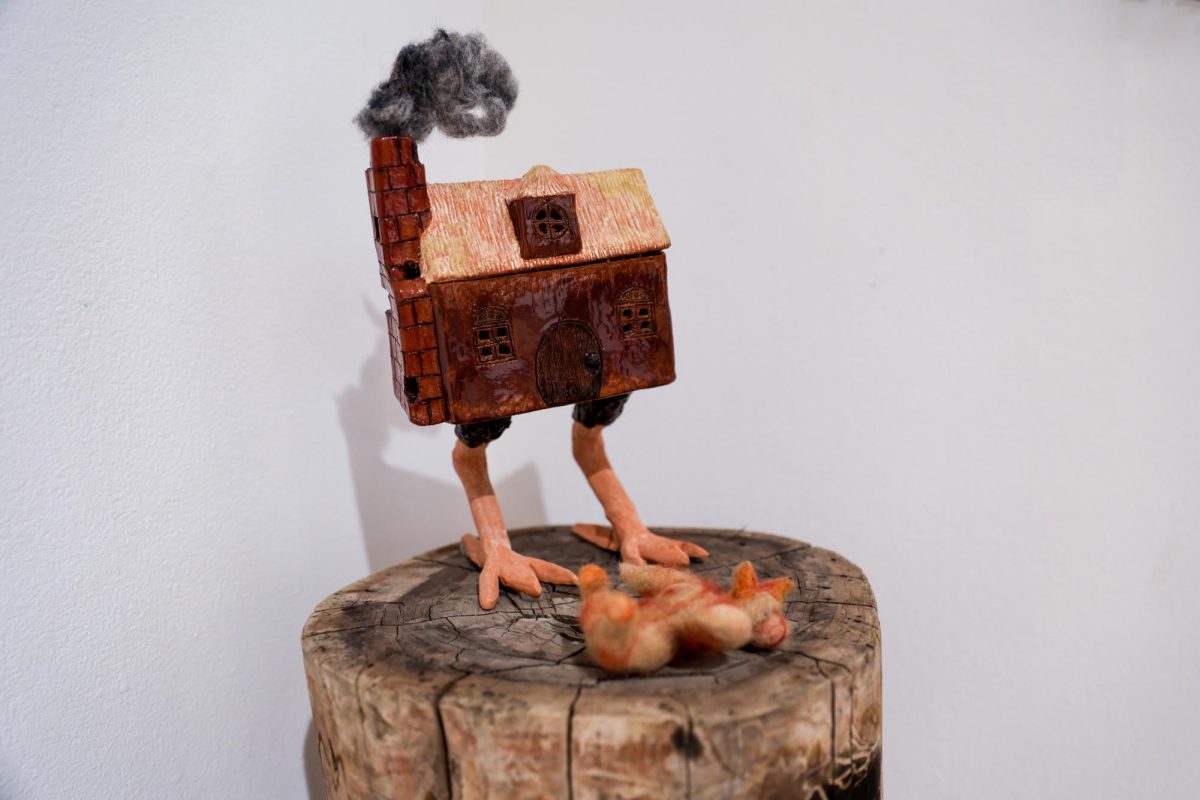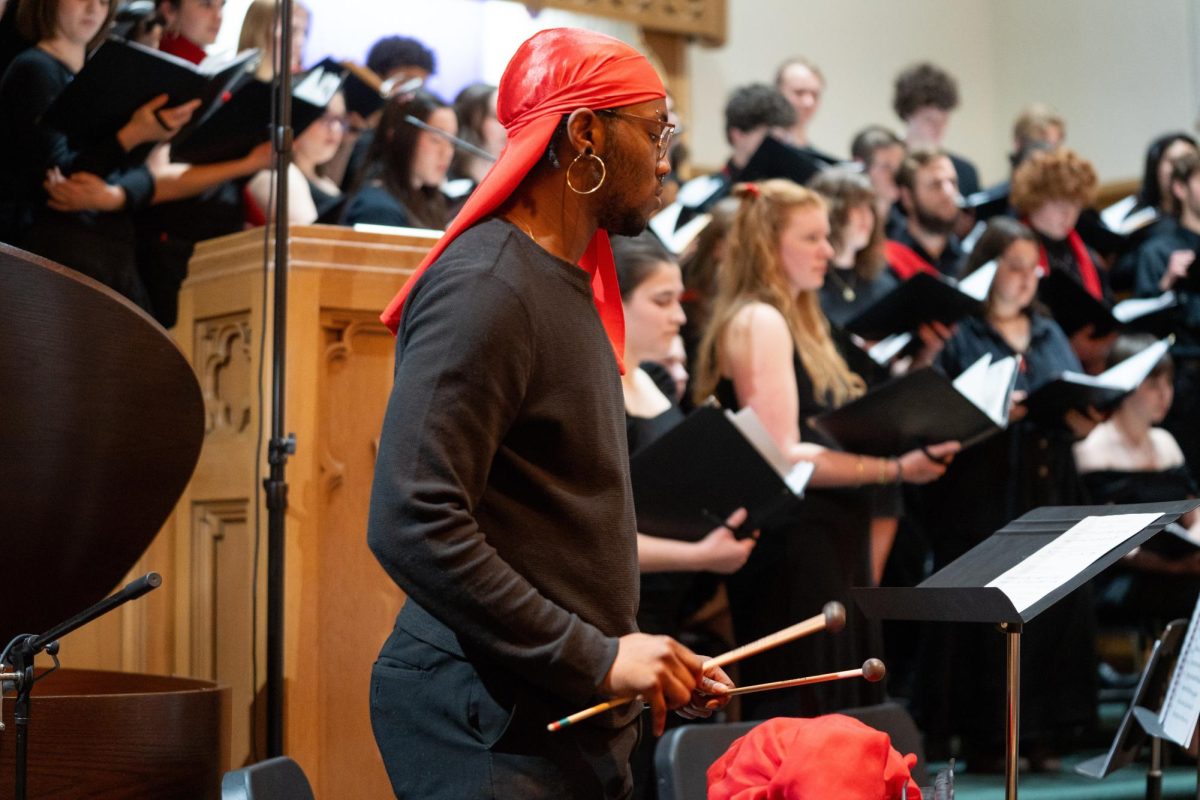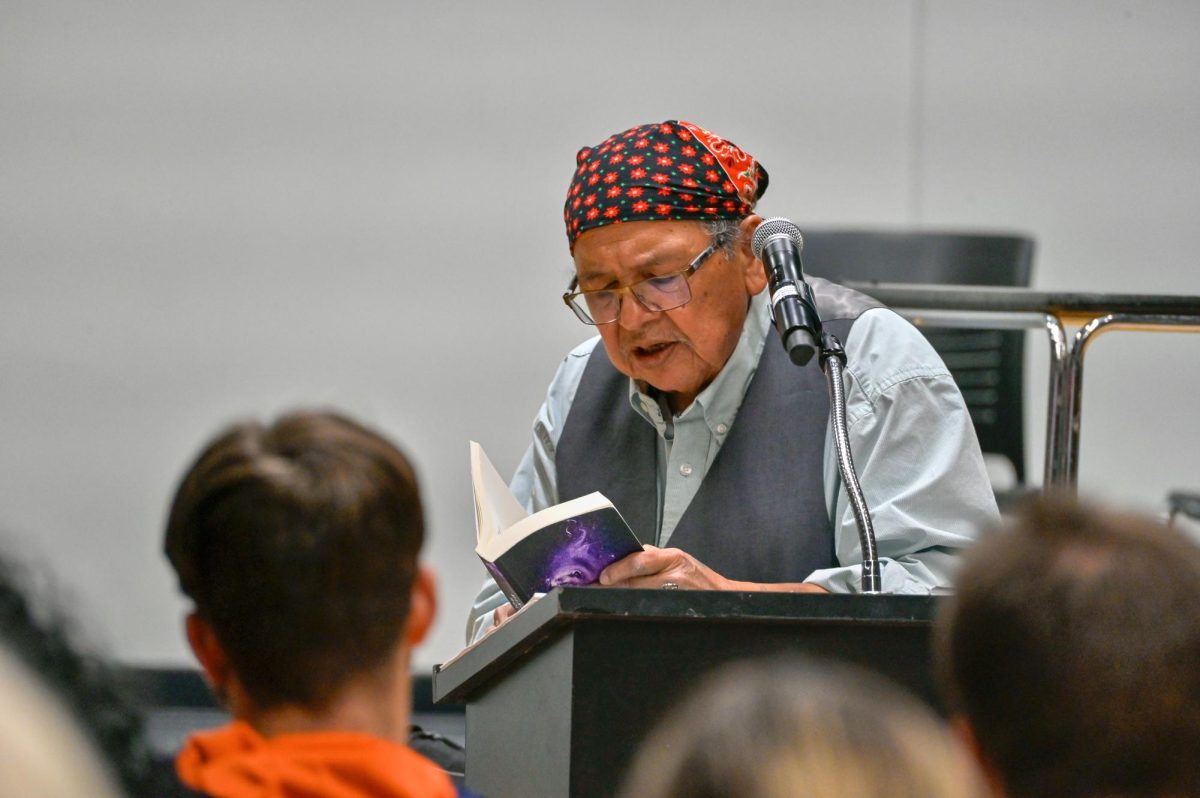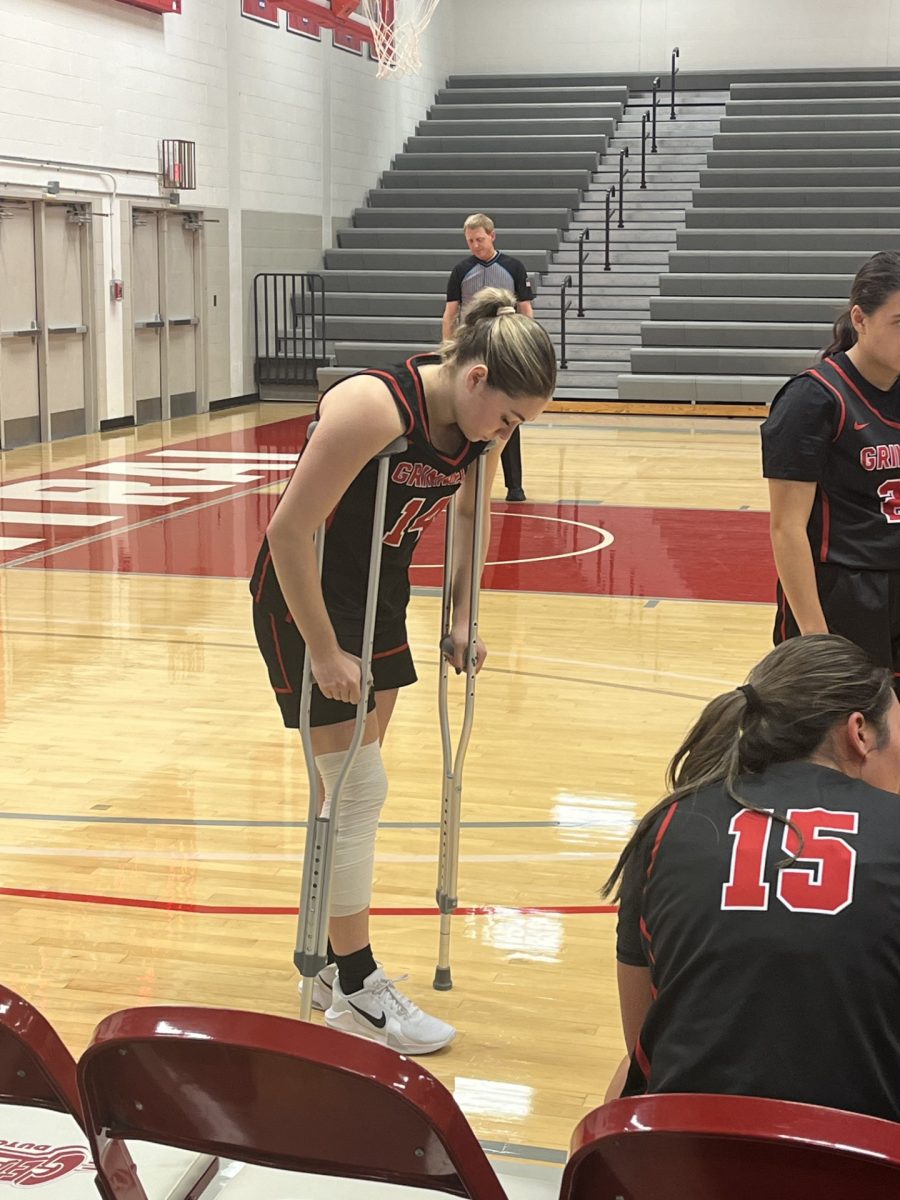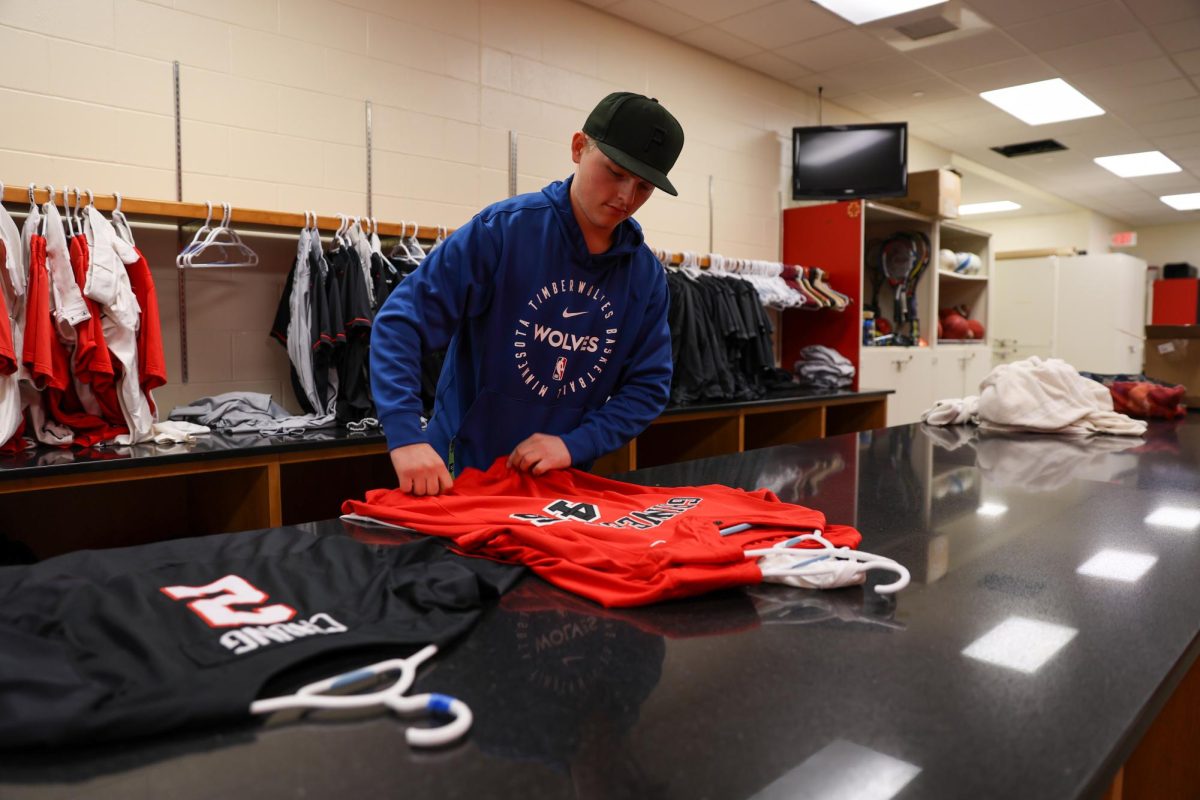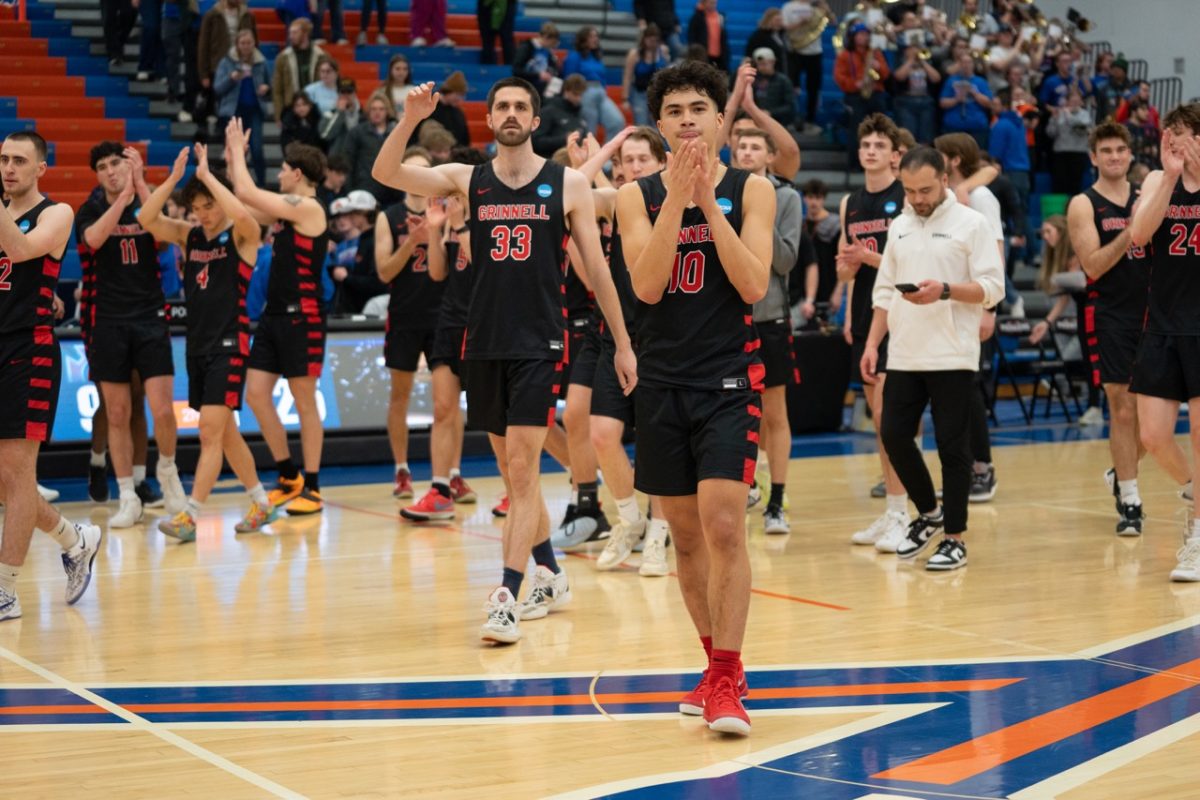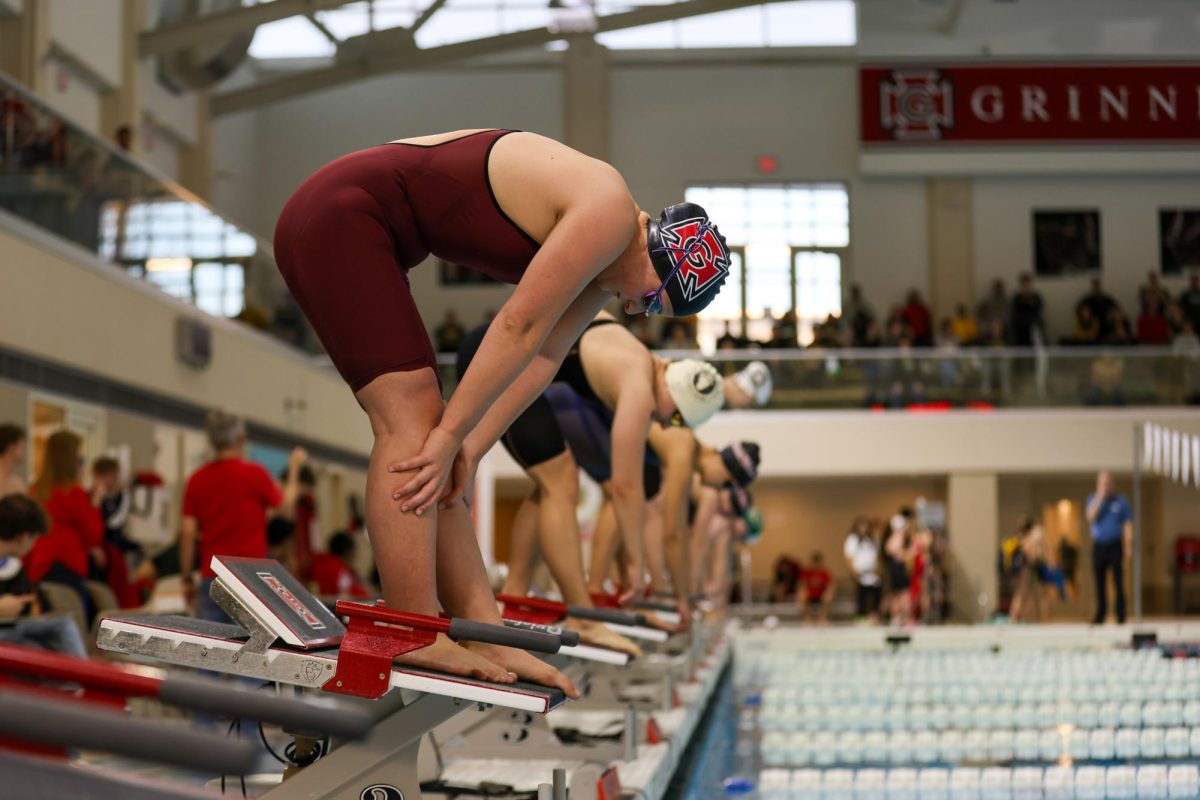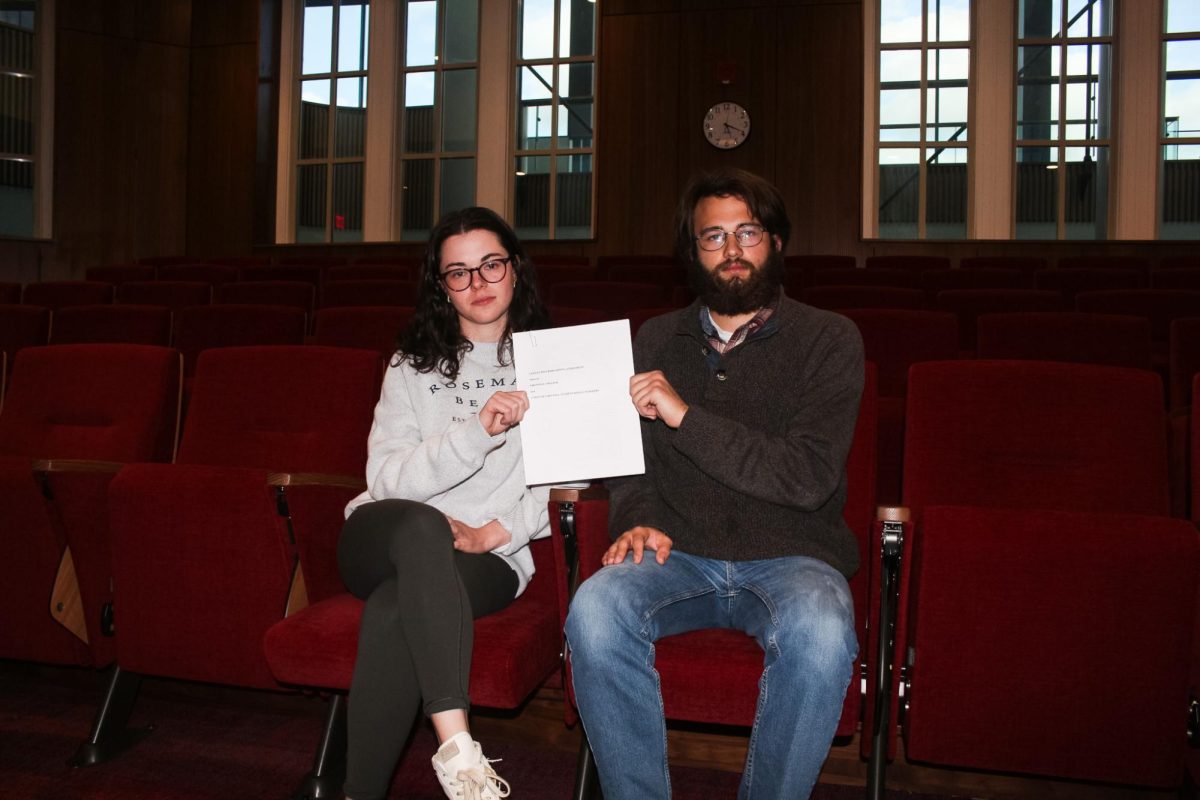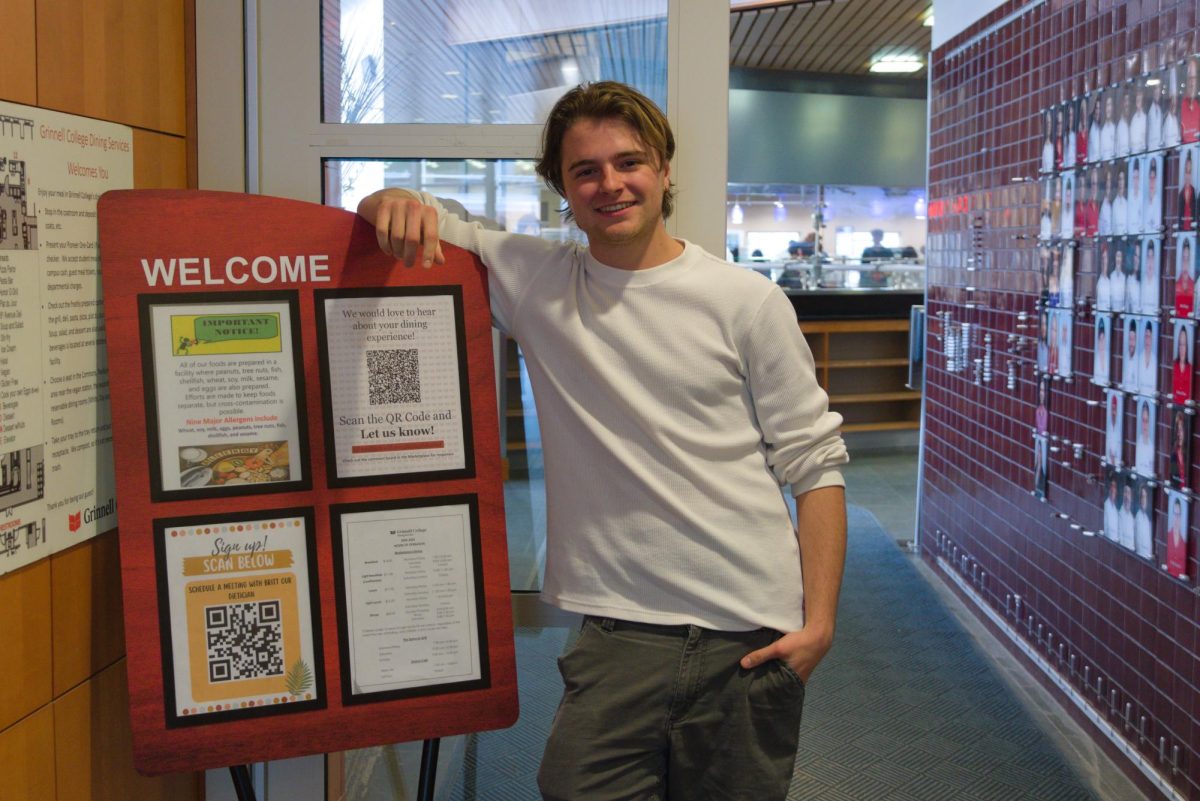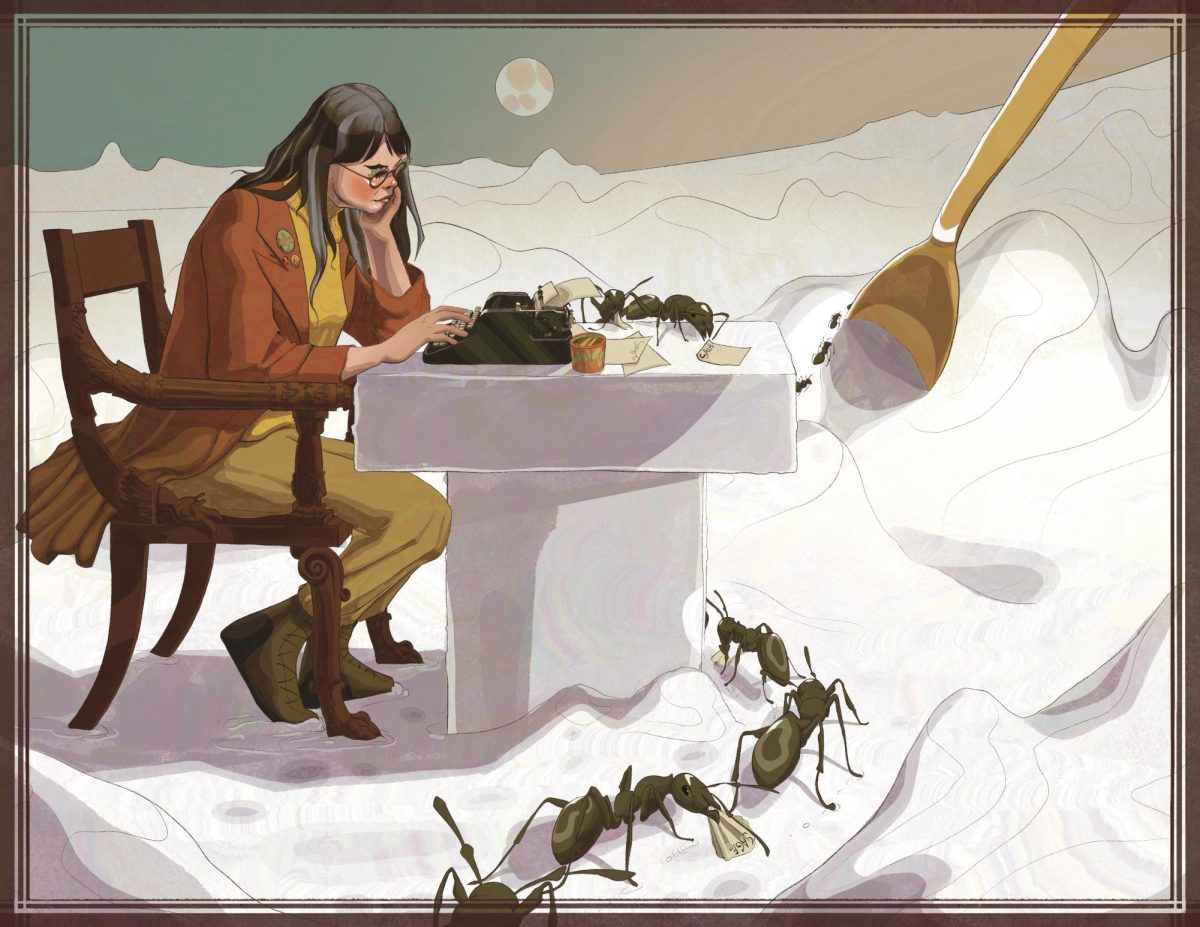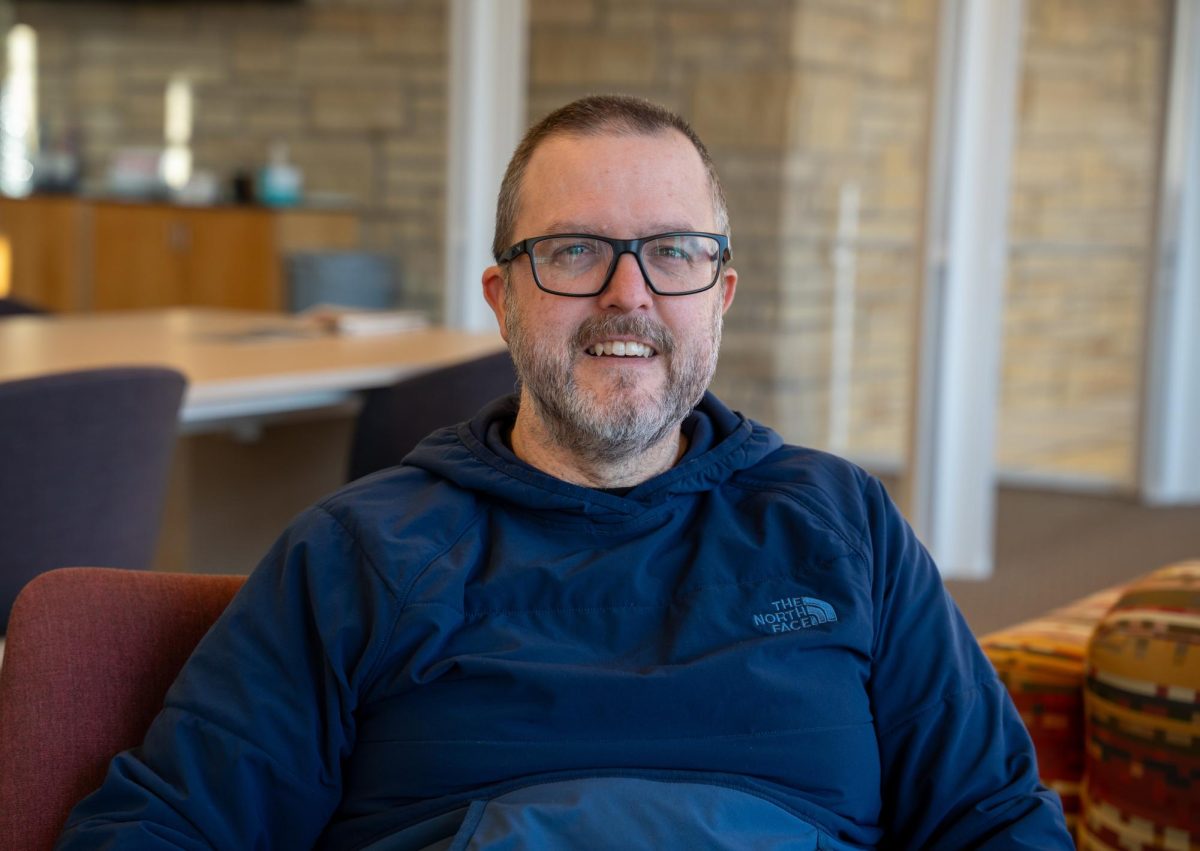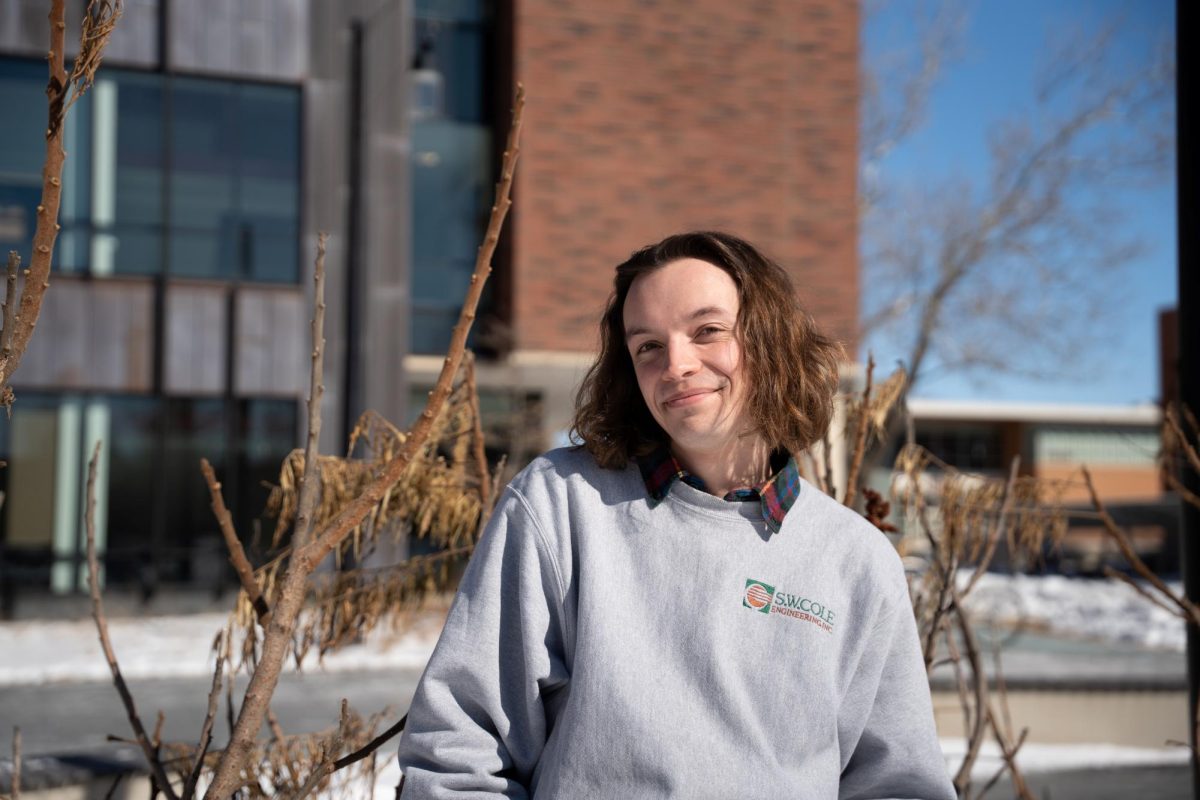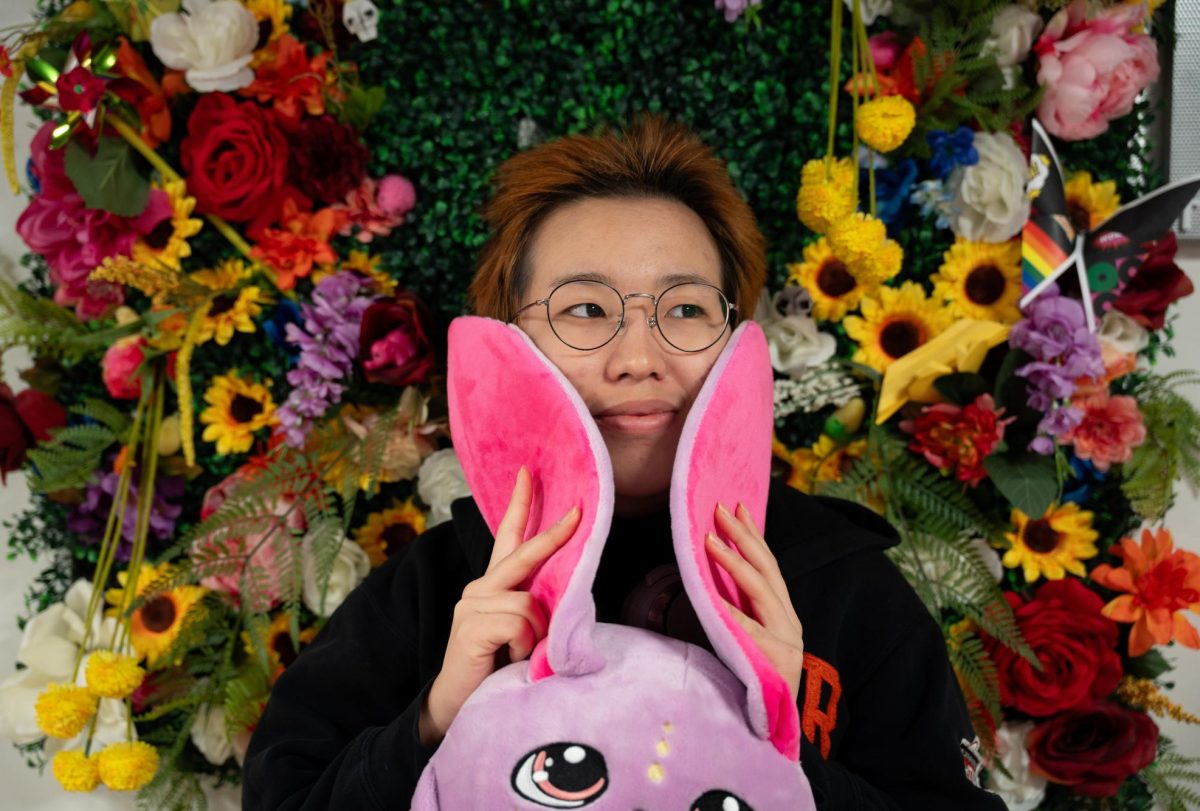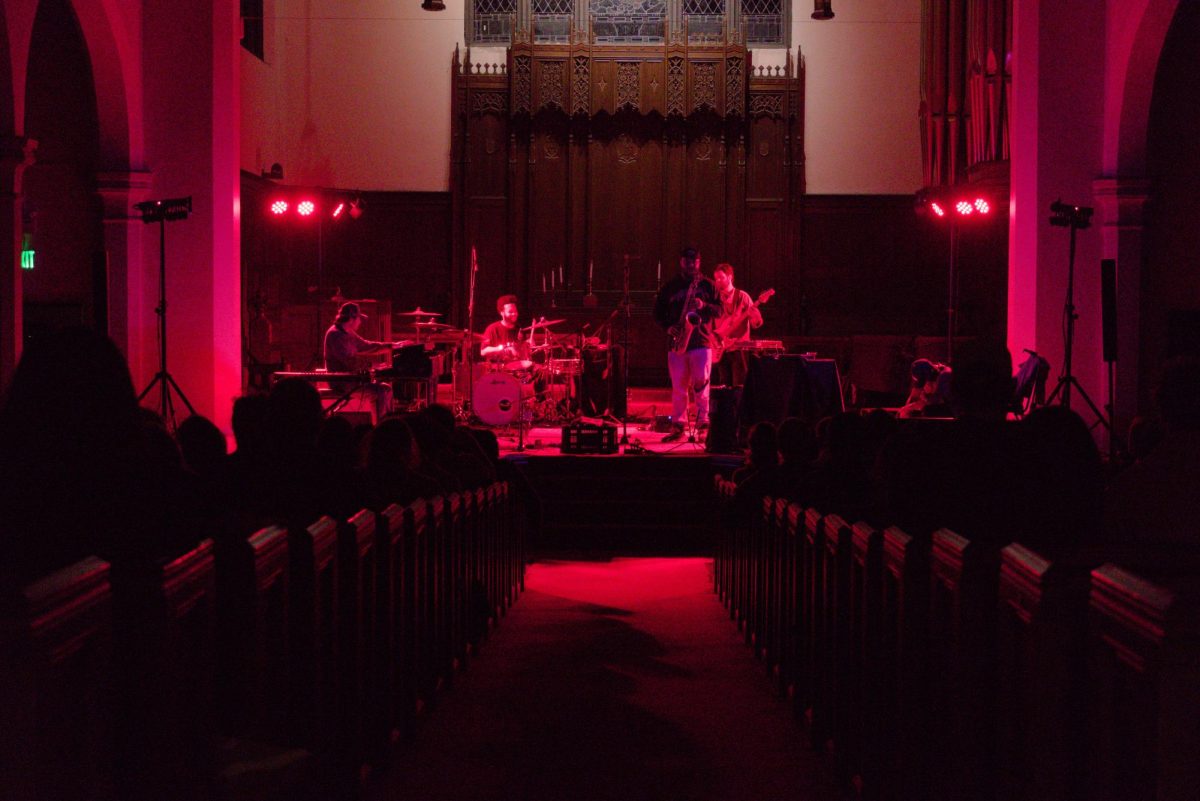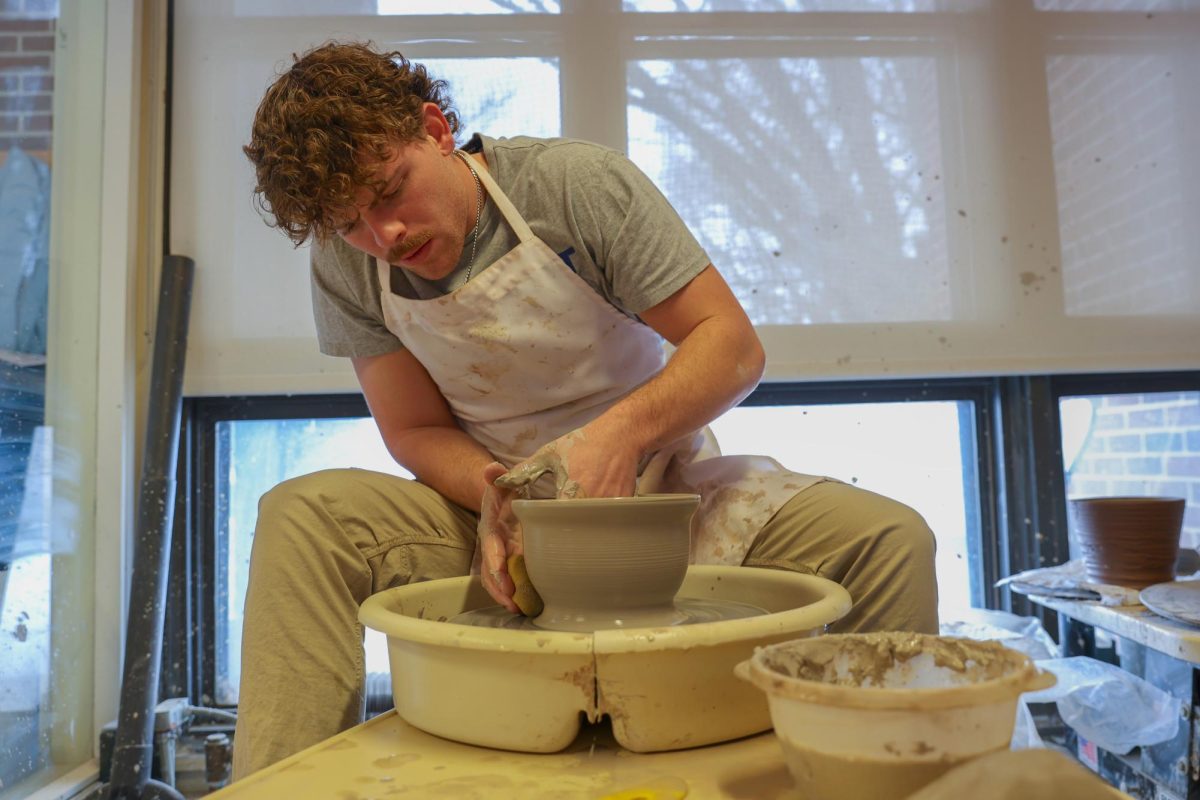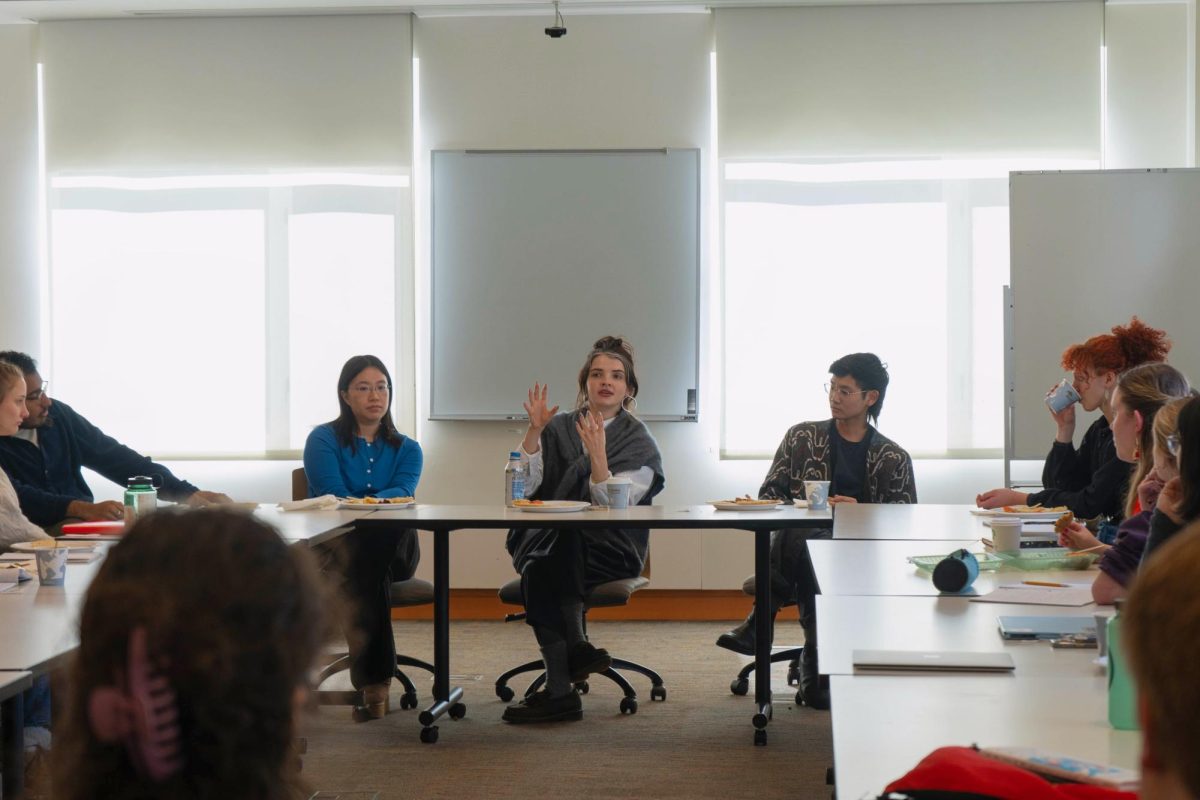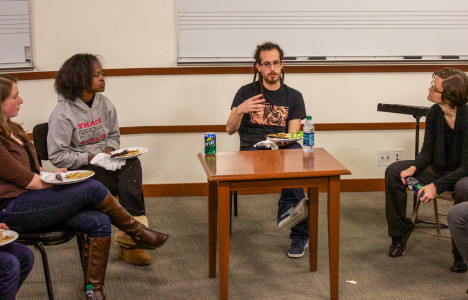
The Grinnell College community has been graced with the presence of an innovative sound artist by way of Greece and the Netherlands, Stelios Manousakis. Fresh off the completion of his Ph.D. at the Center for Digital Arts and Experimental Media at the University of Washington, Manousakis comes to Grinnell for his two-week residency with the hopes of breaking new ground on a current composition, an 80 minute suite of pieces sure to challenge and expand the boundaries of computer coding and instrumentation alike.
Professor John Rommereim, Music, described the department’s reasoning for bringing Manousakis to campus.
“We really felt strongly that it would be optimal to bring him, an artist working in electrocoustic music, sound art, to campus because it’s imperative that we have visiting artists in a field not previously represented at Grinnell. His visit accords well with the work of our Mellon Postgraduate Fellow, Abby Aresty, and her course in sound art, as well as with Andrew Kaufman and his work in the art department,” said Rommereim. “The arts are becoming necessarily less siloed, that musicians need to increasingly know the new approaches that technology gives us to sound and to image. Bringing in people like Stelios helps us to think as a community towards the intersection of those arts.”
Rommereim and others who saw Manousakis’ installation also described the importance of systems in his art.
“If you are only concerned with what art looks like without taking care to the systems or process of the design, you lose some of the central material that’s being presented,” Rommereim said.
In a similar vein, Aaron Levin ’17, who organized the informal student lunch with Manousakis this past Wednesday, commented on the importance of systems and the intersection of text and sound with regards to Stelios’ current exhibition in Faulconer Gallery.
“It’s very different, almost indescribable, compared with any other events at Faulconer. [The use of poetry] was very interesting, adding a poetic side and narrative to space usually reserved for sound.”
On the notion of systems and the confluence of different arts and influences into sound, Manousakis himself had much to say concerning how Grinnell students should use influences.
“You have to try to see what others have done, you have to study, you have to learn. But, at the same time, you have to create your own music, then you will never make a mistake. If you only try to play others’ music, you will always make mistakes and feel uninspired, but if you play your own, you won’t have any concept of mistake,” Manousakis said. “There is not one type of music in the world, we have our own kinds of folk music, even dance electronic music has come to influence my music and acts as folk music in its own right.”
When asked about his impressions of the Grinnell student body, Manousakis said he appreciated “the wide variety of diversity of interests and openness with their musical opportunities, beside the limited venues available in a small college.”
“In any musical venue, whether it be software or conventional musical instruments, you have to try and break it, to push it past its limits and let it glitch out or struggle to perform. Only in that space will you find room to work with it and areas of inspiration.”
Manousakis finished by recommending students listen to the Greek composer, Iannis Xenakis, “a diverse composer with mathematical pieces, conventional pieces, a really remarkable composer with a lot to offer.” One could say the very same of Manousakis, especially in light of his work and his person.
